Archaeology
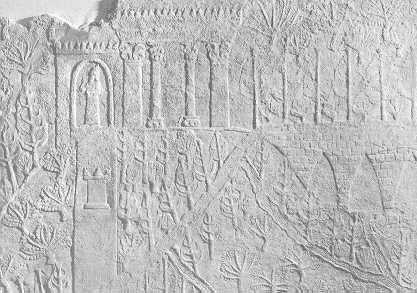
Kuyunjik Relief, c.650 BC, "Garden of Sennacherib"
Possibly described by Strabo (or Philo?)
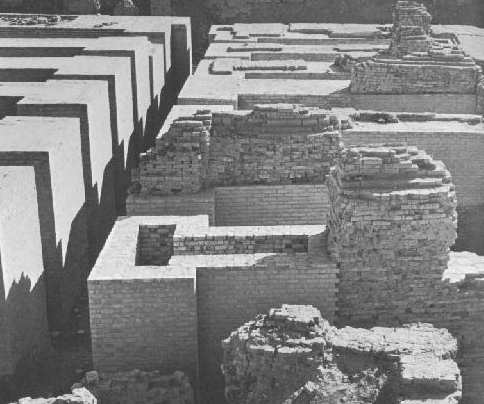
Vaulted Chambers excavated by Koldewey, c.1899
More Views of this Excavation
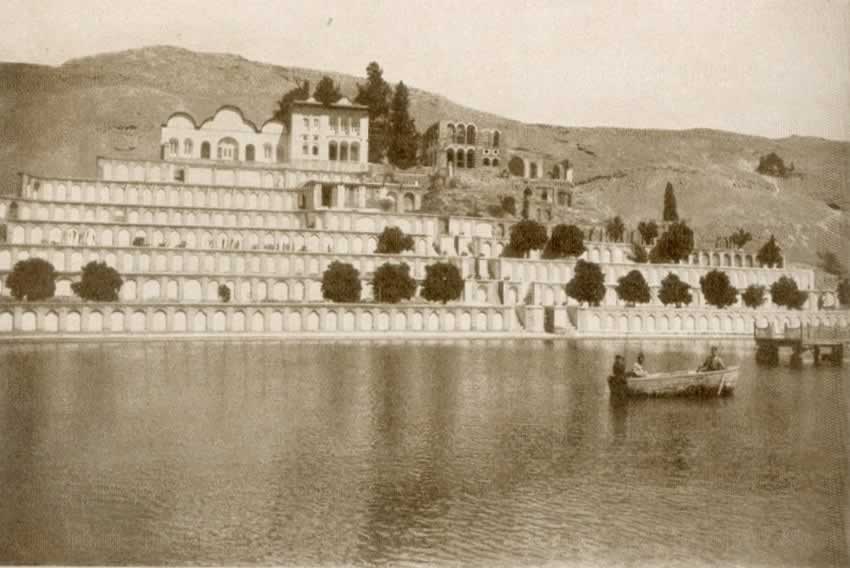
An 18th-century Hanging Garden at Shiraz, Iran
Classical Rigour
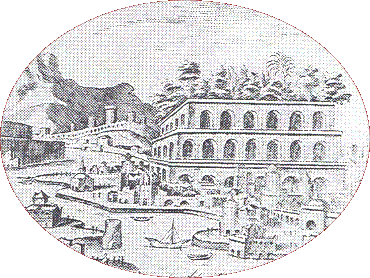
Earliest known reconstruction
by Maarten van Heemskerck (1498-1574)
apparently seeking to reconcile Herodotus, c.450 BC
(Tower of Babel: ziggurat)
with Ctesias, c.400 BC (square footprint,
thick walls, open vaulted galleries & apartments)
and Clitarchus, 310-301 BC (summit garden)
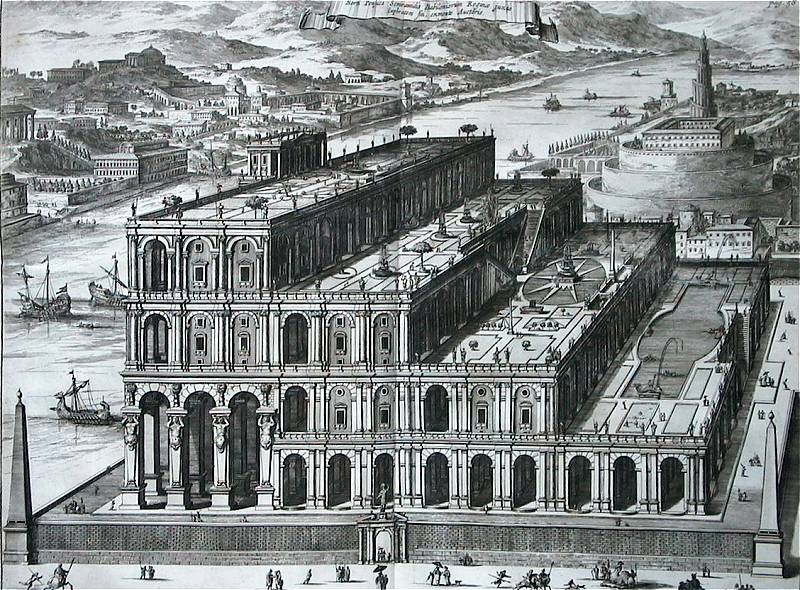
Classicizing reconstruction by Athanasius Kircher, 1679
apparently based on Ctesias, c.400 BC (square footprint, theatre-style terraces, open galleries & apartments)
and Philo, c.250 BC, or c.150 BC,
or 1st century AD, or 6th century AD (fountains)
But in this view Kircher puts the river in front
Set for Nabucco, 2000
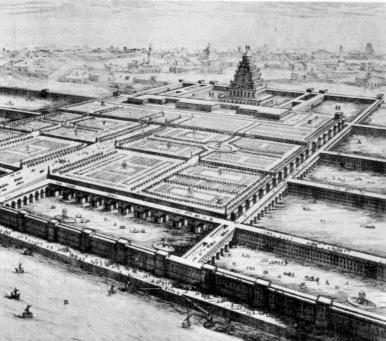
Romanizing reconstruction by
Johann Bernhard Fischer von Erlach, 1725
apparently based on Herodotus, c.450 BC
(square footprint, 2-horse wide walls with apartments)
Ctesias c.400 BC (theatre-style vaulted terraces)
Philo, c.250 BC, or c.150 BC,
or 1st century AD, or 6th century AD (streams, fountains)
and Diodorus c.50 BC (apartments in the piers)
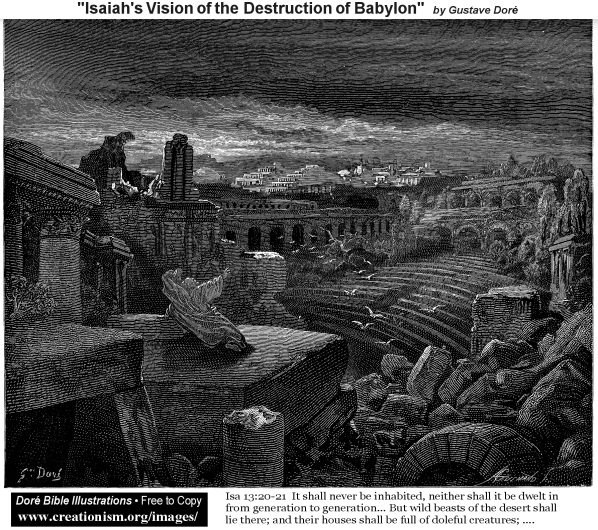
Babylon and its gardens destroyed by Gustav Doré (1832-1883)
Terraces and two tiers of arches may represent the gardens, apparently based on Ctesias.
Post Classical Fantasies
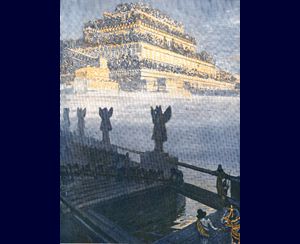
Fanciful reconstruction by Frantisek Kupka, 1908
possibly incorporating Herodotus, c.450 BC
(Tower of Babel: ziggurat with winding stairs)
or based on Berossus, c.250 BC
(stone knoll or mountain, high walkways,
no vaults or columns mentioned)
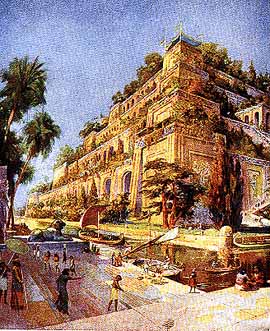
J A Brendon's reconstruction, 1924, possibly incorporating
Herodotus' Tower of Babel (ziggurat with winding stair case)
but also following
Ctesias, c.400 BC (open galleries, thick walls, hidden pumps)
Clitarchus, 310-301 BC (summit garden)
Berossus, c.250 BC (stone knoll or mountain, high walkways)
and Diodorus c.50 BC who slightly modified Ctesias
(vaulted terraces, stairways)
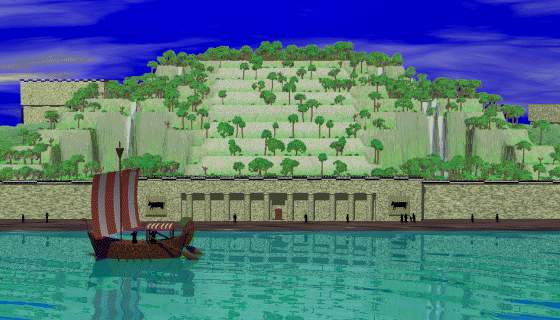
Lee Krystek's reconstruction (copyright 1998)
possibly incorporating Herodotus c.450 BC
( Tower of Babel: ziggurat)
but mainly following Clitarchus, 310-301 BC
(summit garden, stone columns)
Berossus, c.250 BC (mountain shaped)
and Philo, c.250 BC, or c.150 BC,
or 1st century AD, or 6th century AD (waterfalls)
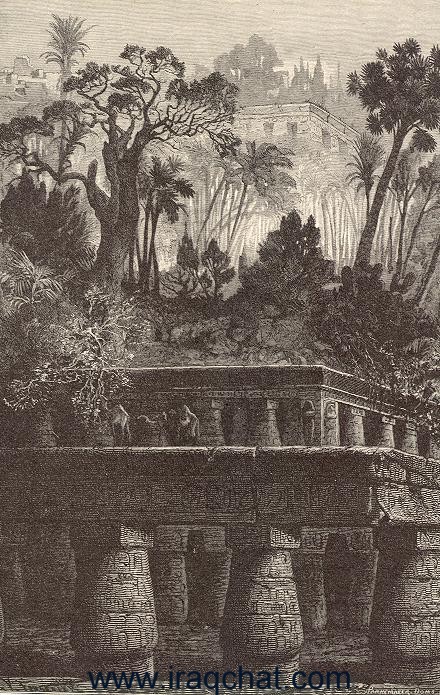
Reconstruction apparently based on
Philo, c.250 BC, or c.150 BC,
or 1st century AD, or 6th century AD
(forest of carved stone columns, main upper terrace,
lush foliage on supple branches - here eaten by camels)
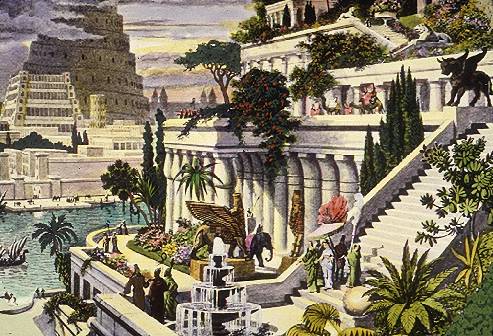
Fanciful reconstruction, 19th century, mistakenly attributed to
Maarten van Heemskerck (1498-1574), apparently based on
Berossus, c.250 BC (mountain shaped, high walkways)
and Philo, c.250 BC, or c.150 BC, or 1st century AD,
or 6th century AD (forest of columns, fountains)
and Diodorus, c.50 BC (stairways)
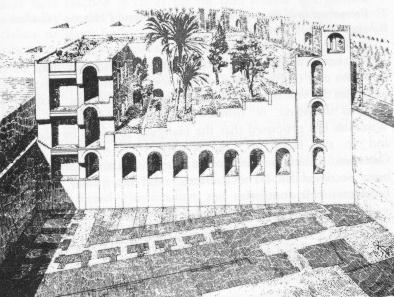
Koldewey's archaeological reconstruction
based on archaeological remains
and Ctesias, c.400 BC
(multiple terraces, thick walls, passageways, apartments)
and Diodorus, c.50 BC (terraces vaulted)
Outside Collection of Images